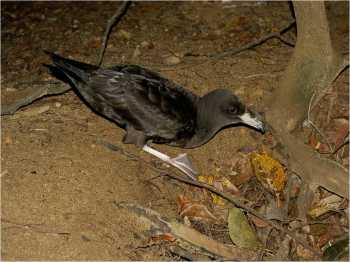Rowan Trebilco (Biological Sciences, Simon Fraser University, Burnaby, Canada) and colleagues published a paper in the journal Aquatic Conservation: Marine and Freshwater Ecosystems in 2010 that detailed seabird mortality in an Australian fishery. The journal's Chief Editor has recently announced that their paper was one of the 10 most-cited papers in the journal of that year in 2011.
Congratulations are due to all the paper's authors, who include ACAP stalwarts Rosemary Gales (Co-convenor, ACAP's Population and Conservation Status Working Group) and Barry Baker (Convenor, ACAP's Seabird Bycatch Working Group).
The paper's abstract follows:
"1. Seabirds killed incidentally in Australia's eastern tuna and billfish (ETBF) longline fishery between September 2001 and June 2006 were examined to evaluate species composition and to relate, where possible, capture events to operational and environmental factors.
2. During this period 2.129 million hooks on 2202 shots were observed, and 369 birds were reported killed. The majority (78%) of these were flesh-footed shearwaters (Puffinus carniepes [sic]), 53% of which were male and 44% female. Smaller numbers of medium to large sized albatrosses (Diomedeidae, predominantly female) and other shearwaters (Puffinus spp.) and petrels (Pterodroma spp.) dominated the remainder of the bycatch.
3. Of the 369 birds reported taken as bycatch, 280 were available for necropsy, and species identifications performed in situ by observers were assessed. While observer identifications were generally correct for common species, performance was poor for less common ones.
4. The geographical location (latitude) of shots, season, time of day at which shots were set, and bait type and life status (dead or alive) influenced the seabird bycatch rate. The majority of captures (87% overall) occurred between 30 and 35°S, with bycatch being lowest in winter, and remaining at similar levels across the other seasons.
5. The use of live fish bait was generally associated with increased captures of both seabirds overall, and flesh-footed shearwaters in particular."

Flesh-footed Shearwater Puffinus carneipes. Photograph by Barry Baker
Reference:
Trebilco, R., Gales, R., Lawrence, E., Alderman, R., Robertson, G. & Baker, G.B. 2010. Characterizing seabird bycatch in the eastern Australian tuna and billfish pelagic longline fishery in relation to temporal, spatial and biological influences. Aquatic Conservation: Marine and Freshwater Ecosystems 20: 531-542.
With thanks to Rosemary Gales for information.
John Cooper, ACAP Information Officer, 31 October 2012

 English
English  Français
Français  Español
Español